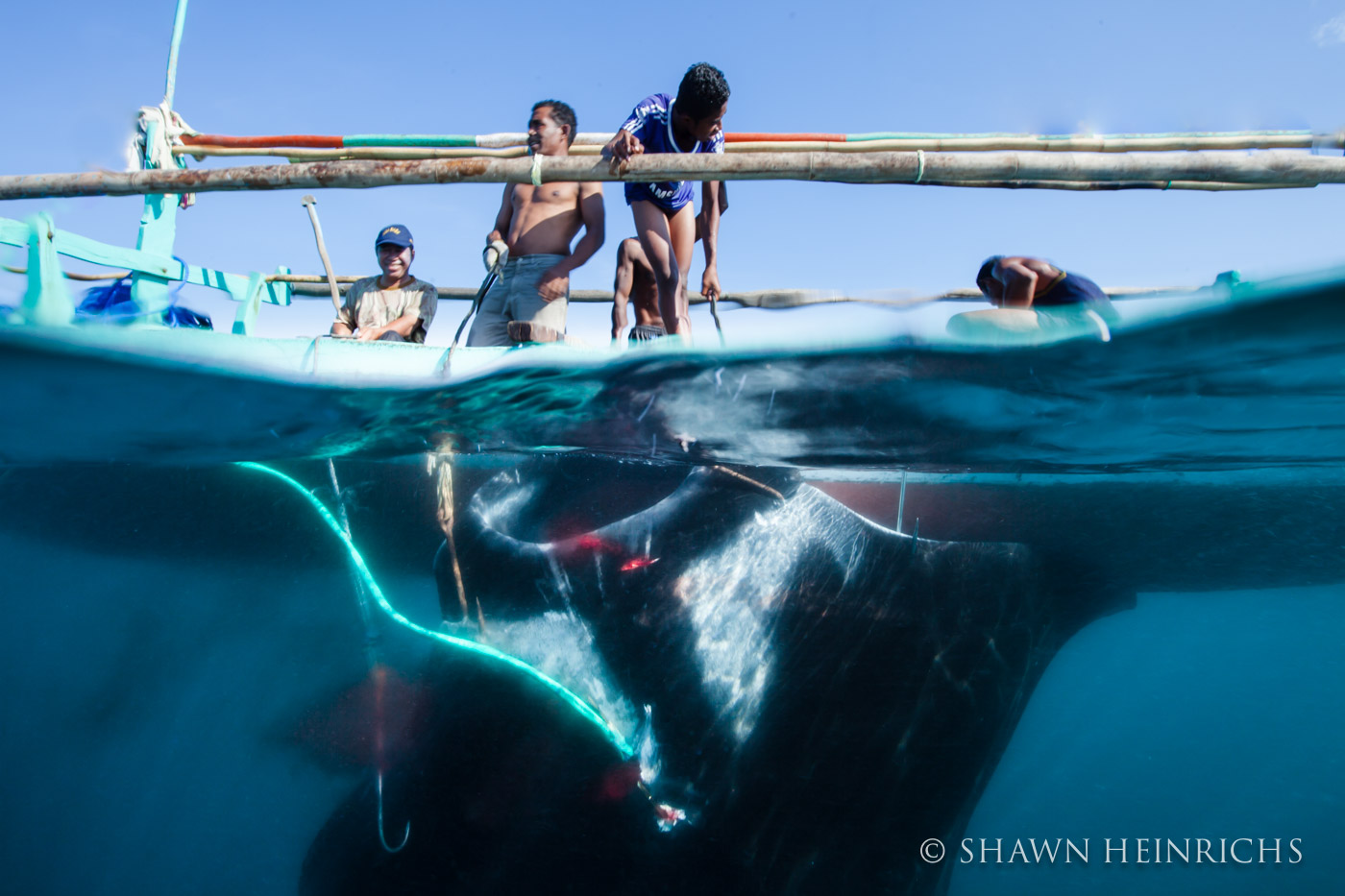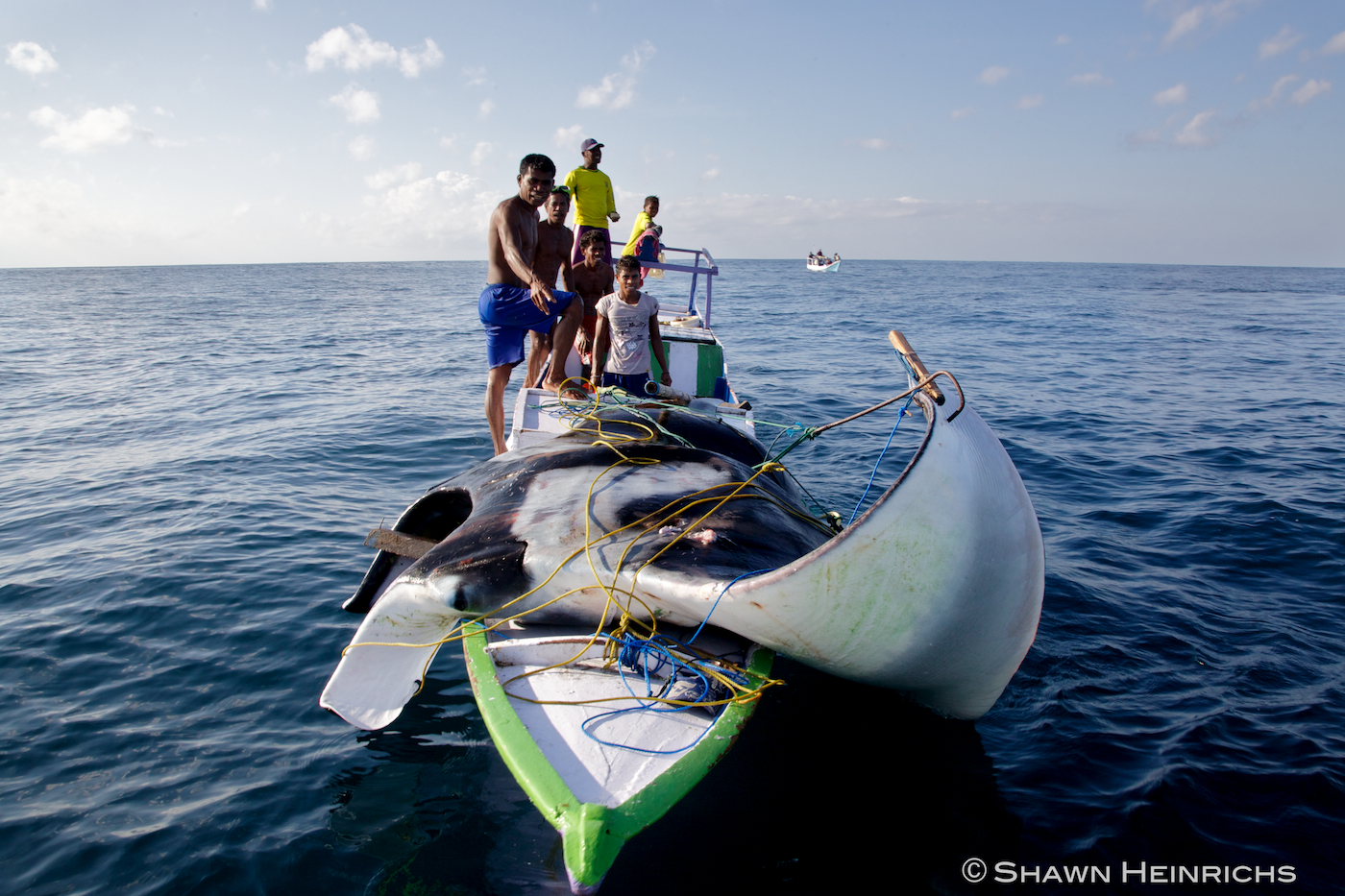The arrests, which were made in conjunction with the Ministry of Marine Affairs and Fisheries, Conservation International and the Wildlife Conservation Society, constitute the first enforcement of a law passed in February of this year that gave full protection to mantas throughout Indonesia. The legislation protects both reef and giant mantas and bans the fishing of both species anywhere in Indonesian waters, as well as the sale or trade of any parts thereof within the country’s borders. Conservation organizations including CITES, the Manta Trust and Conservation International have helped implement this law, and the arrests made in August and September are welcome proof that the government is ready to make a real commitment to the protection of these spectacular creatures.

The first of the arrests, which took place on August 22nd in Surabaya, saw officials seize 110 pounds (50 kilos) of gill plates, of which 43 pounds (19.5 kilos) came from giant or reef mantas. The rest of the gills confiscated were taken from mobula rays, a close relative of the manta that is not currently protected in Indonesia. As well as the ray parts, officials found 28 pounds (13 kilos) of illegal turtle meat, for which offense the arrested trader could face a fine of up to $10,000 and a maximum of five years in prison. The maximum penalty for trafficking manta parts is currently $25,000. The trader arrested in this first raid was the owner of a seafood restaurant, and boasted to undercover buyers that he possessed a current stock of over 375 pounds (170 kilos) of manta gills, and could easily order more from suppliers in Bali and East Java. The second of the arrests apprehended a trader in possession of 1,231 pounds (559 kilos) of manta bones, as well as gill plates and other prohibited species’ parts; the third arrest occurred after yet another trader was caught trying to sell a complete manta corpse in West Java.

Trade in manta parts, as well as a countless litany of other protected and endangered species, is rife in Indonesia, a country with a reputation as one of the biggest exporters of sharks and rays to nations like China and Hong Kong. The trade is fuelled by the demand for these parts for use in Asian medicine and cuisine — manta gill plates, for example, are used in a health tonic sold throughout Asia despite playing no part in traditional Chinese medicine. Supplying the demand for these products is a lucrative business, with the trade in manta gill-plates alone having an estimated annual value of around $30 million. In China, 2.2 pounds (1 kilo) of manta gill-plates retails for between $250-500, although the traders at the bottom of the supply chain in Indonesia receive a fraction of that amount. However, the success of this abhorrent industry depends on traders like those arrested in recent months in Indonesia — if the legislation passed in February can succeed in cutting off the supply of gill plates to Asia, the demand for such products cannot be met.
It’s hugely encouraging to see the laws passed earlier this year translate from impressive words into effective actions. The Indonesian government has several compelling incentives to make good on its promise to conserve the nation’s manta rays, from protecting the overall health of the marine environment to safeguarding the considerable income that the ocean giants generate for the country each year. Indonesia is a world-famous dive destination, and for many divers, manta ray encounters are the biggest attraction of all. Globally, the manta-watching industry generates a total of $140 million each year, while a study led by Wild Aid, Shark Savers and the Manta Trust estimated that in Indonesia alone, manta tourism is worth $15 million. Of the $30 million generated by the international trade in manta parts, Indonesia sees just $400,000, which effectively means that mantas in Indonesia are worth 40 times more alive than they are dead. More importantly, manta rays are an invaluable part of the marine ecosystem that, due to their low reproductive rates, have no chance of recovery if they continue to be fished on such a destructive scale. Both species are currently listed as Vulnerable on the IUCN Red List.
Joe Walston, the Wildlife Conservation Society’s vice president for field conservation, commended the recent arrests for sending “a clear message that Indonesia is serious about protecting its natural heritage against illegal wildlife traders.” Sentencing has not yet taken place, but the traders will appear in court throughout October. With any luck, the maximum penalties will be served so that these arrests can act as an example to other Indonesian traders, no matter their place in the business hierarchy.

